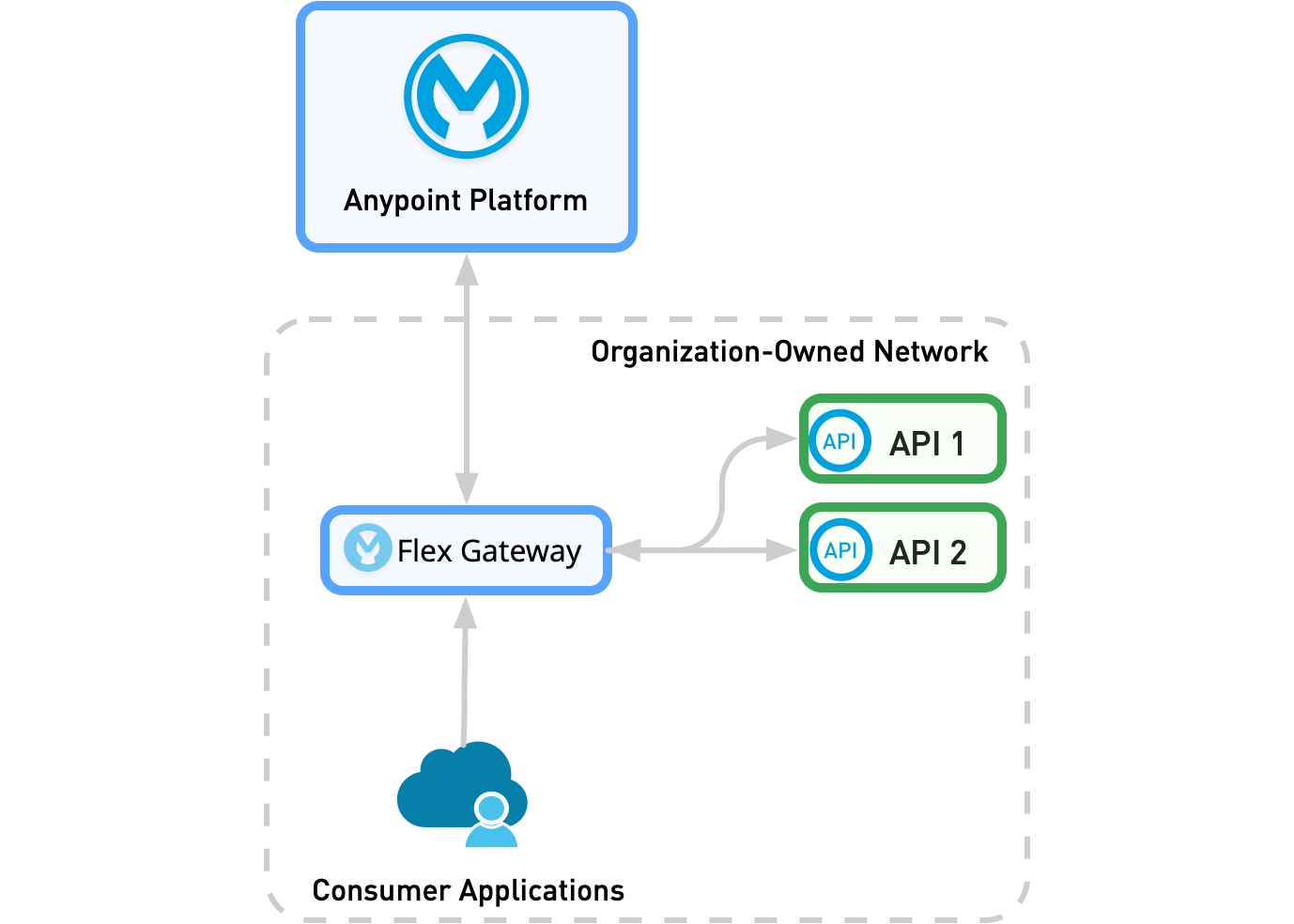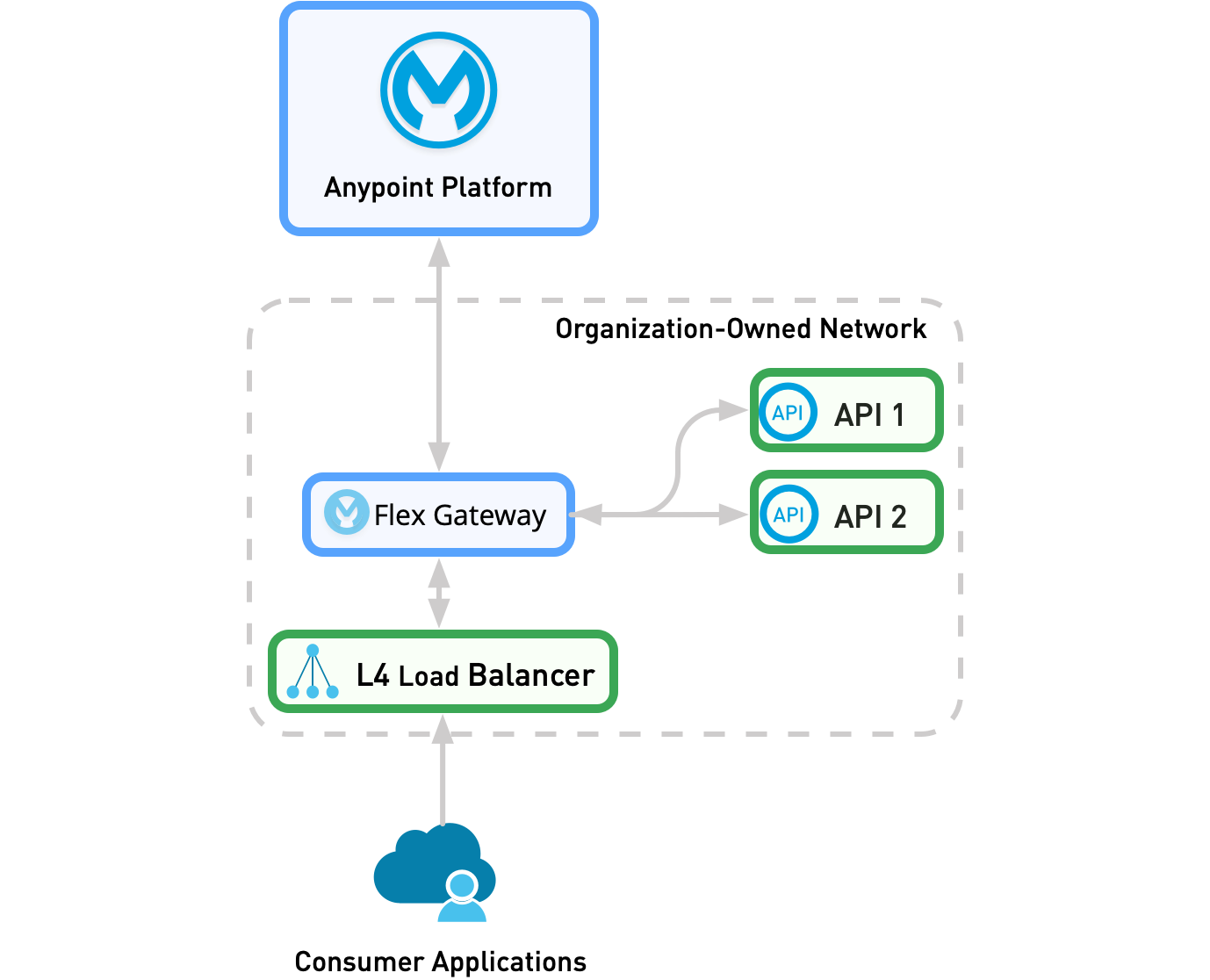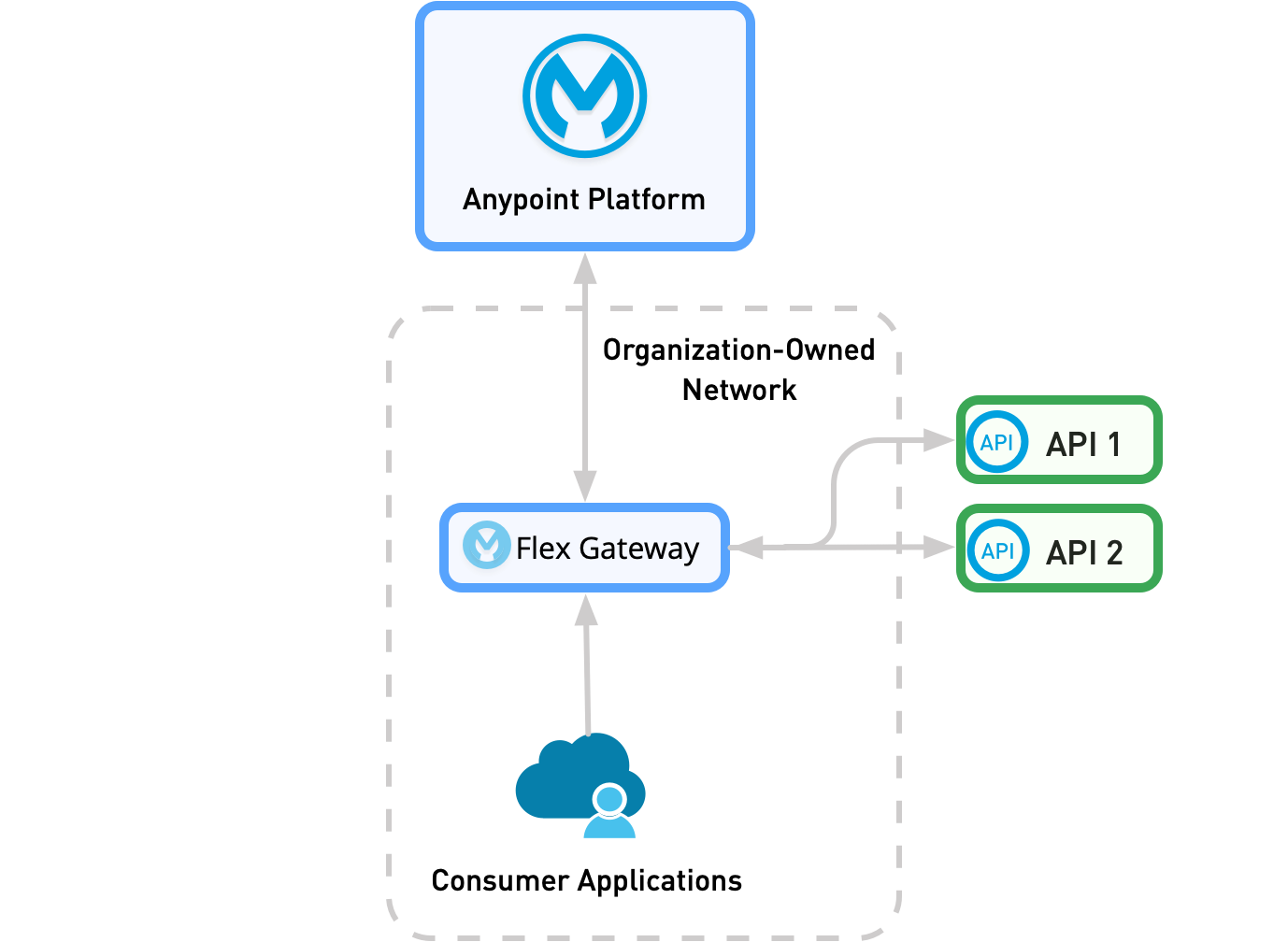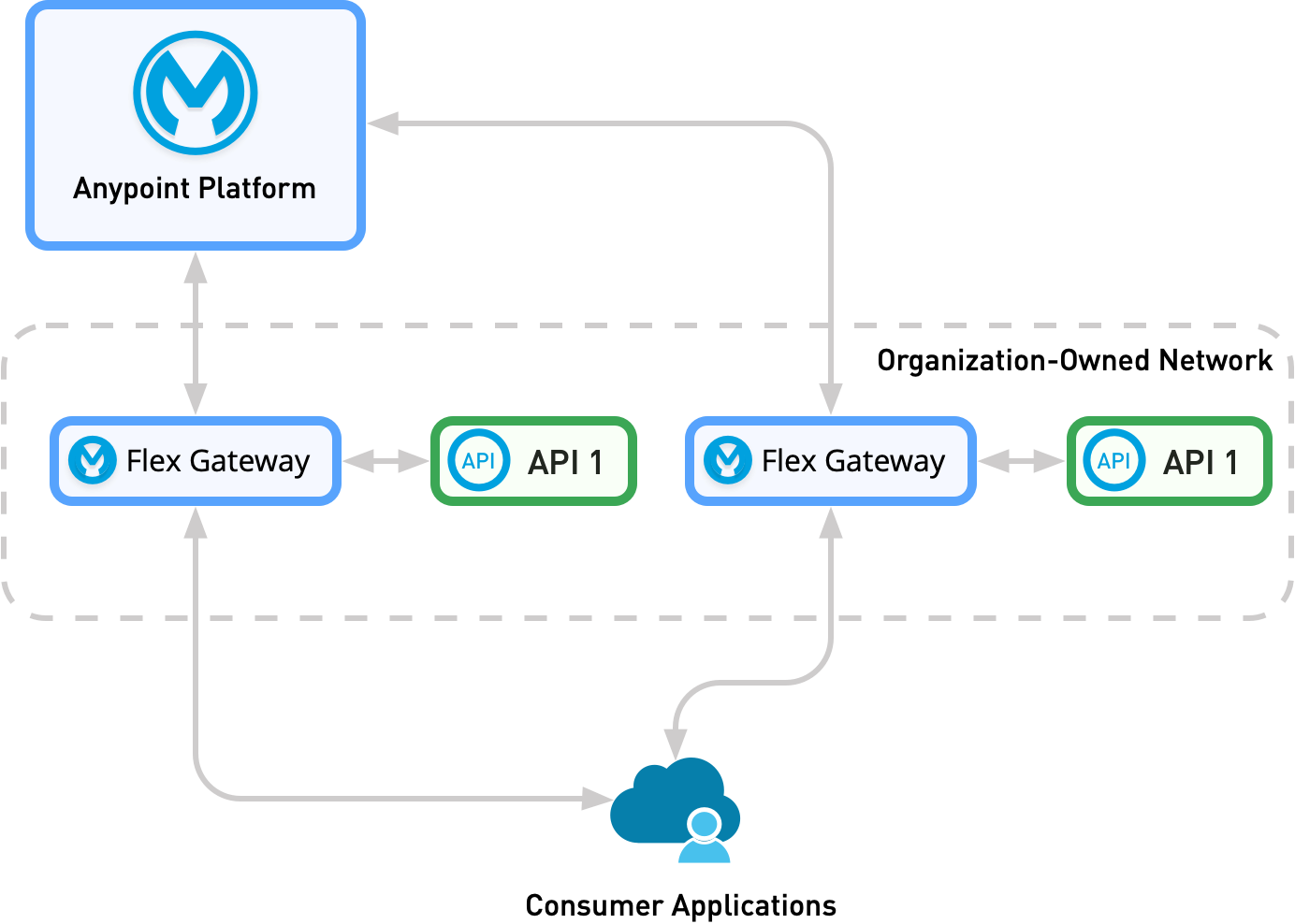Flex Gateway Deployment Models
Flex Gateway supports multiple deployment models, which apply to both Connected Mode and Local Mode:
You can extend the deployment models in this overview to all technological stacks that have the appropriate network controls applied. For more information about routing configuration modes, see Routing Configuration Methods.
All the following diagrams show Flex Gateway running in Connected Mode. For Flex Gateway running in Local Mode, the only difference is that Anypoint Platform would not be present in the deployment model. This does not affect how information flows between Flex Gateway and the upstream and downstream services.
Standalone Deployment
In a standalone deployment, Flex Gateway acts as a standalone service that protects one or more integration API flows by managing internal traffic.
As the following diagram shows, all traffic is inside an organization-owned network. The traffic passes through Flex Gateway before reaching the consumer APIs.

Ingress Deployment
Similar to standalone deployment, in an ingress deployment, Flex Gateway acts as a standalone service that protects one or more integration API flows. However, in an ingress deployment, Flex Gateway manages external traffic entering the internal network. Ingress deployment is the most common deployment model.
Flex Gateway can act as both an ingress and an egress gateway.
As the following diagram shows, all external traffic passes through Flex Gateway before reaching the consumer APIs. Flex Gateway is typically deployed behind a load balancer, and the consumer application does not belong to the same network as Flex Gateway or the APIs.

Ingress deployment is not the same as a Kubernetes Ingress controller or Ingress Resource. For more information about routing configuration, see Routing Configuration Methods.
|
Egress Deployment
An egress deployment is the opposite deployment model of an ingress deployment. Flex Gateway still acts as a standalone service that protects one or more integration API flows. However, in an egress deployment, Flex Gateway manages internal traffic exiting the internal network, for example, API requests to non-organization-owned APIs.
Flex Gateway can act as both an ingress and an egress gateway.
As the following diagram shows, all internal traffic from the consumer application passes through Flex Gateway before reaching the external APIs.

Sidecar Deployment
In a sidecar deployment, each Flex Gateway deployment only protects the APIs exposed by its protected service. A new Flex Gateway replica is added with each new protected service.
As the following diagram shows, traffic in a sidecar deployment passes through Flex Gateway to the respective consumer API. The consumer application can belong to the same network as Flex Gateway or an external network.

Routing Configuration Methods
There are different routing configuration methods dependent on what mode Flex Gateway is running in or what technological stack Flex Gateway is deployed on.
How connections between Flex Gateway and services are configured is independent of the deployment model.
Control Plane
In control plane routing configuration, Flex Gateway and service connections are configured in a remote control plane. For Flex Gateway, the control plane is Anypoint Platfrom. Control plane configuration is only available in Flex Gateway Connected Mode.
Custom Resource Definitions (CRDs)
In custom resource definitions (CRDs) routing configuration, Flex Gateway and service connections are configured in custom resource yaml files.
For Flex Gateway, the CRDs are APIinstance, Service, PolicyBinding, and Configuration and are defined in the Declarative Configuration Reference Guide.
In Flex Gateway CRDs define connections in Local Mode but are also necessary for some connections in Connected Mode.
Kubernetes Ingress Resource
Flex Gateways running in Local Mode and deployed on Kubernetes can use Kubernetes Ingress resources to define connection routing. When routing is defined via Ingress resources, Flex Gateway acts as an Ingress Controller. Ingress resources are only avaliable in Kubernetes Local Mode.
You can use Ingress resources and CRDs simultaneously.
For more information about how to configure Flex Gateway as an Ingress Controller, see Configure Flex Gateway as an Ingress Controller in Local Mode.



